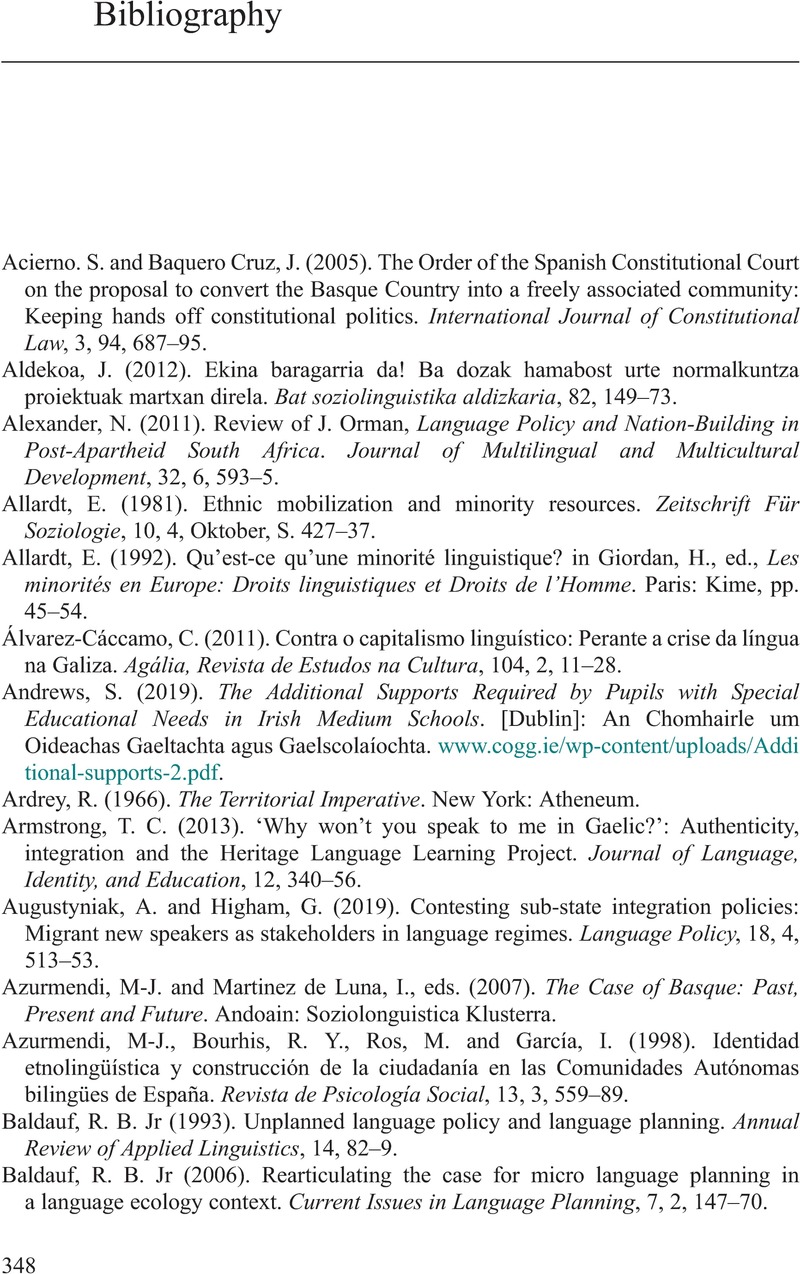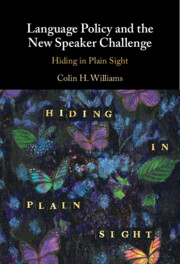Book contents
- Language Policy and the New Speaker Challenge
- Language Policy and the New Speaker Challenge
- Copyright page
- Contents
- Figures
- Tables
- Acknowledgements
- 1 The Emergence of the New Speaker Phenomenon
- 2 Popinjays, Pragmatism and Policy: A New Speaker Triptych
- 3 Wales: Normalised Expectations
- 4 Scotland: Cautious Consideration
- 5 Ireland: Tempered Acceptance
- 6 The Basque Autonomous Community and Navarre: Enthusiastic Endorsement
- 7 Catalonia and Galicia: Unalloyed Support?
- 8 The Policy Community and Recommendations on New Speakers
- 9 Conclusion: Contemporary Challenges
- Book part
- Bibliography
- Index
- References
Bibliography
Published online by Cambridge University Press: 02 February 2023
- Language Policy and the New Speaker Challenge
- Language Policy and the New Speaker Challenge
- Copyright page
- Contents
- Figures
- Tables
- Acknowledgements
- 1 The Emergence of the New Speaker Phenomenon
- 2 Popinjays, Pragmatism and Policy: A New Speaker Triptych
- 3 Wales: Normalised Expectations
- 4 Scotland: Cautious Consideration
- 5 Ireland: Tempered Acceptance
- 6 The Basque Autonomous Community and Navarre: Enthusiastic Endorsement
- 7 Catalonia and Galicia: Unalloyed Support?
- 8 The Policy Community and Recommendations on New Speakers
- 9 Conclusion: Contemporary Challenges
- Book part
- Bibliography
- Index
- References
Summary

- Type
- Chapter
- Information
- Language Policy and the New Speaker ChallengeHiding in Plain Sight, pp. 348 - 375Publisher: Cambridge University PressPrint publication year: 2023

